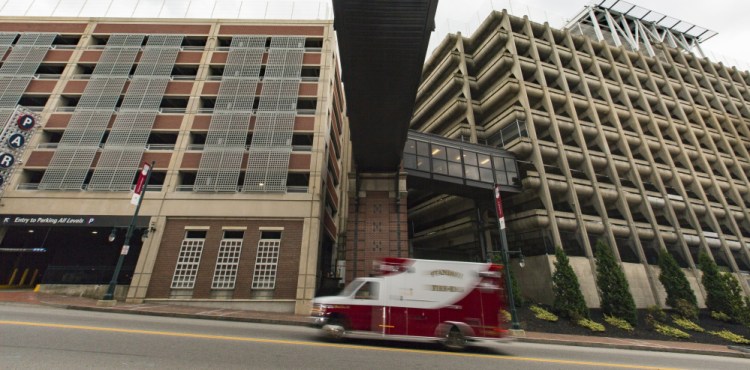Maine Medical Center is the state’s largest hospital, accounting for over a third of all inpatient surgeries performed in Maine, admitting and discharging 41,000 patients annually.
It’s also Portland’s largest employer, with 4,500 workers filling various shifts, 24 hours a day, 365 days a year.
And, for some people and businesses, Maine Med is their neighbor.
It’s not easy to fill all of those roles, but the medical center had done a good job of staying at the forefront of a fast-changing industry while trying to minimize its impact on the people who live or work nearby.
In its role as a good neighbor, the hospital is working with the city to develop a plan for its future growth, not just for the next three to five years, but for up to 20 years in the future.
This plan, known as an “Institutional Overlay Zone,” gives the city a sense of where Maine Med may expand in the years to come, and it spares nearby property owners and other residents the periodic shocks that have accompanied previous expansions.
This is a good way to approach planning with such an important local institution. The City Council should adopt Maine Med’s zoning.
This application comes as a result of a planned $512 million renovation and expansion project, which would modernize the facility, add surgical operating rooms with the latest technical equipment and increase the number of single rooms for patients.
These are critical improvements to this institution.
Patients who are admitted to the hospital are sicker and need more acute care than patients in the past because minor surgeries and other treatments are conducted on an outpatient basis. Maine Med has to change with the times.
The clinical necessity for a hospital that has these attributes has already been well established. The state has issued its approval of the project. The only issue before the council is how it will fit in the city.
Neighbors are concerned about a creeping institution, gobbling up housing and retail space over time, creating dead spaces with big, featureless buildings.
Maine Med has responded to those concerns.
For instance, an employee parking garage that was originally planned to front on Congress Street has been moved to the site of a surface lot currently in use behind the old railroad building on St. John Street.
When preliminary work showed that the garage would interfere with views from the Western Prom, the hospital revised its plans and made the building shorter.
These are good changes that demonstrate good faith. But some of the neighbors’ concerns will never be completely satisfied.
The hospital is an important piece of regional infrastructure. Its benefits extend throughout the city and state, and that should be considered when evaluating impacts on the immediate neighborhood.
The council should approve the overlay zone, and the city should continue to work with Maine Medical Center and its neighbors so that the institution can continue serving its multiple roles.
Send questions/comments to the editors.



Comments are no longer available on this story